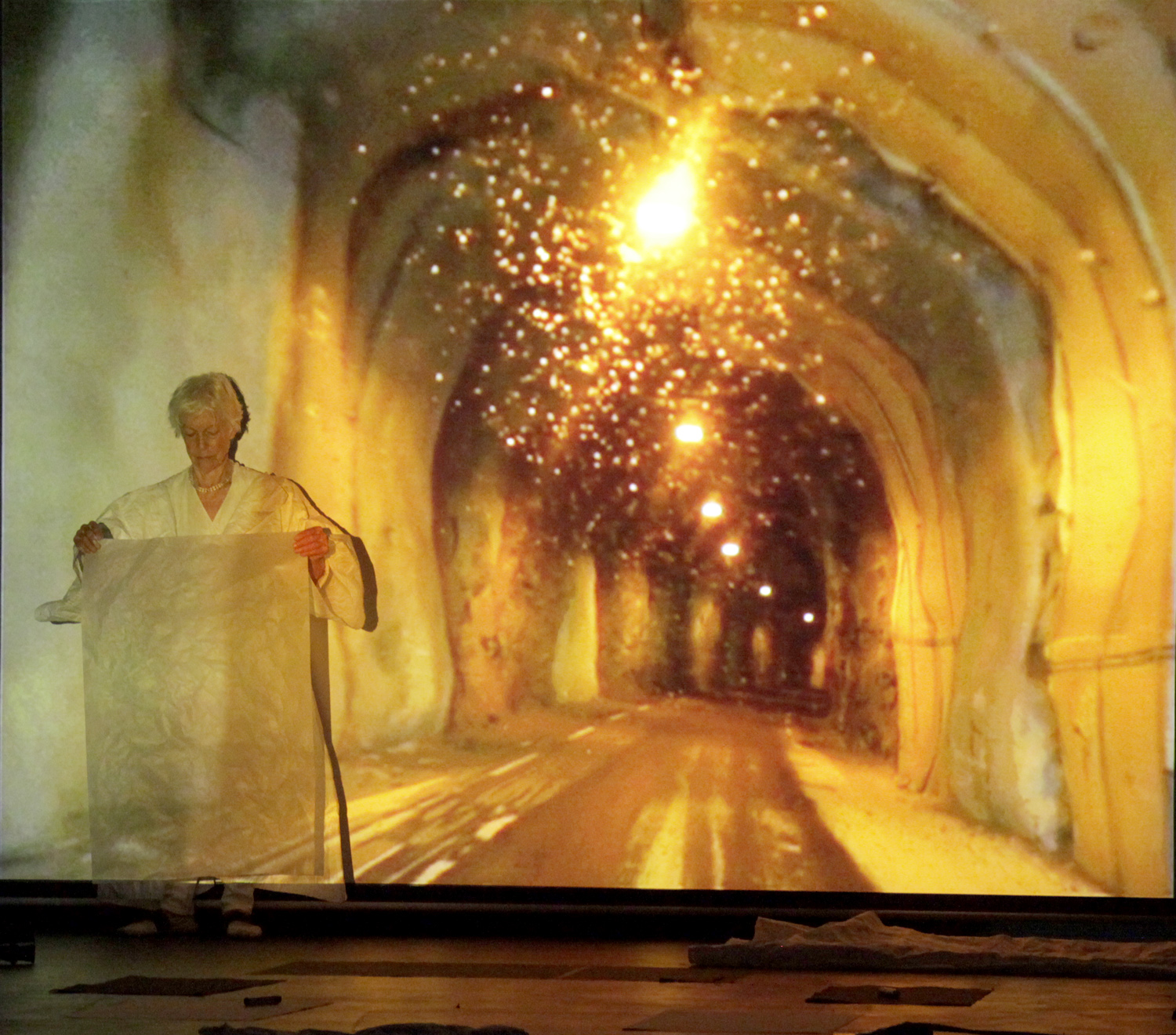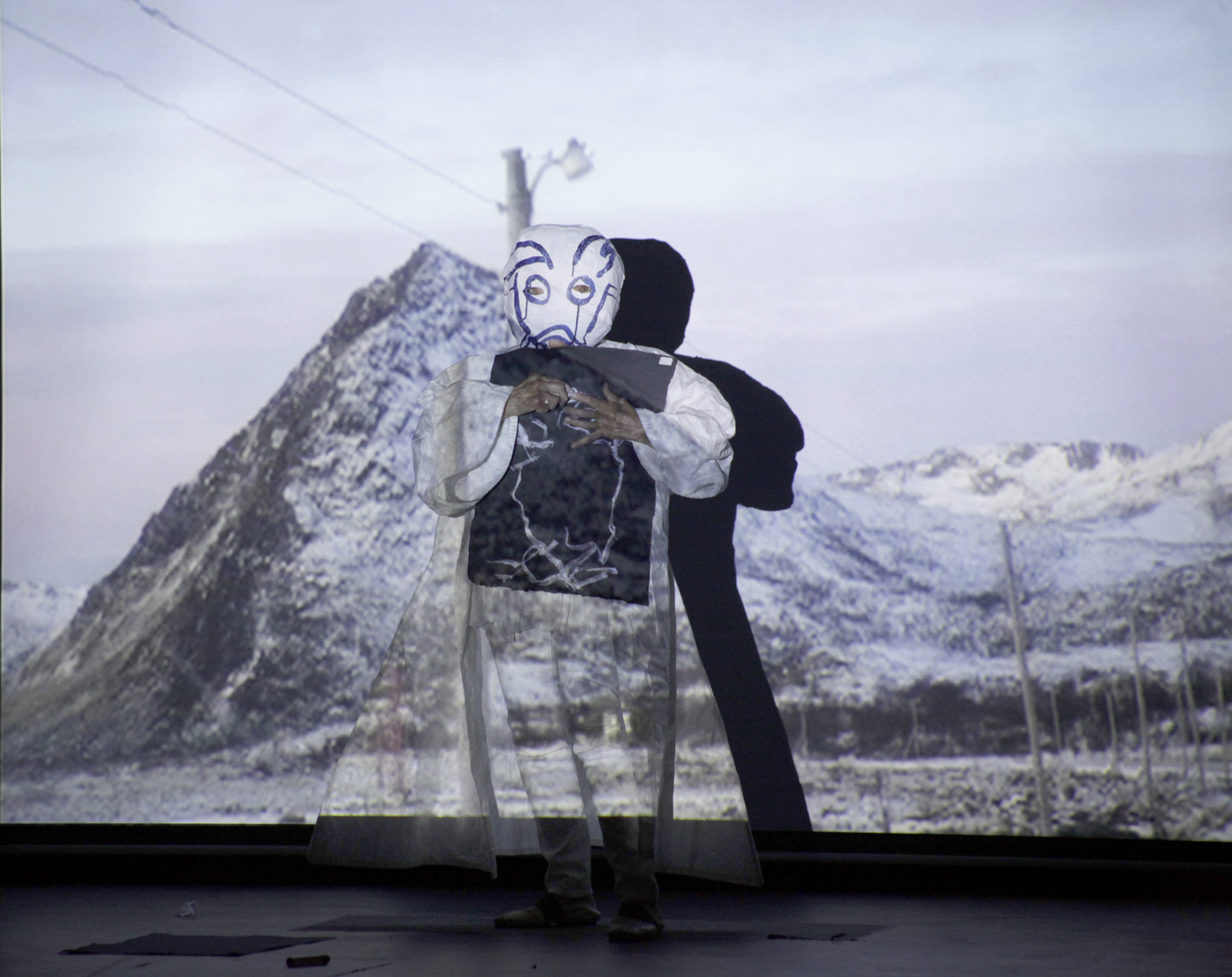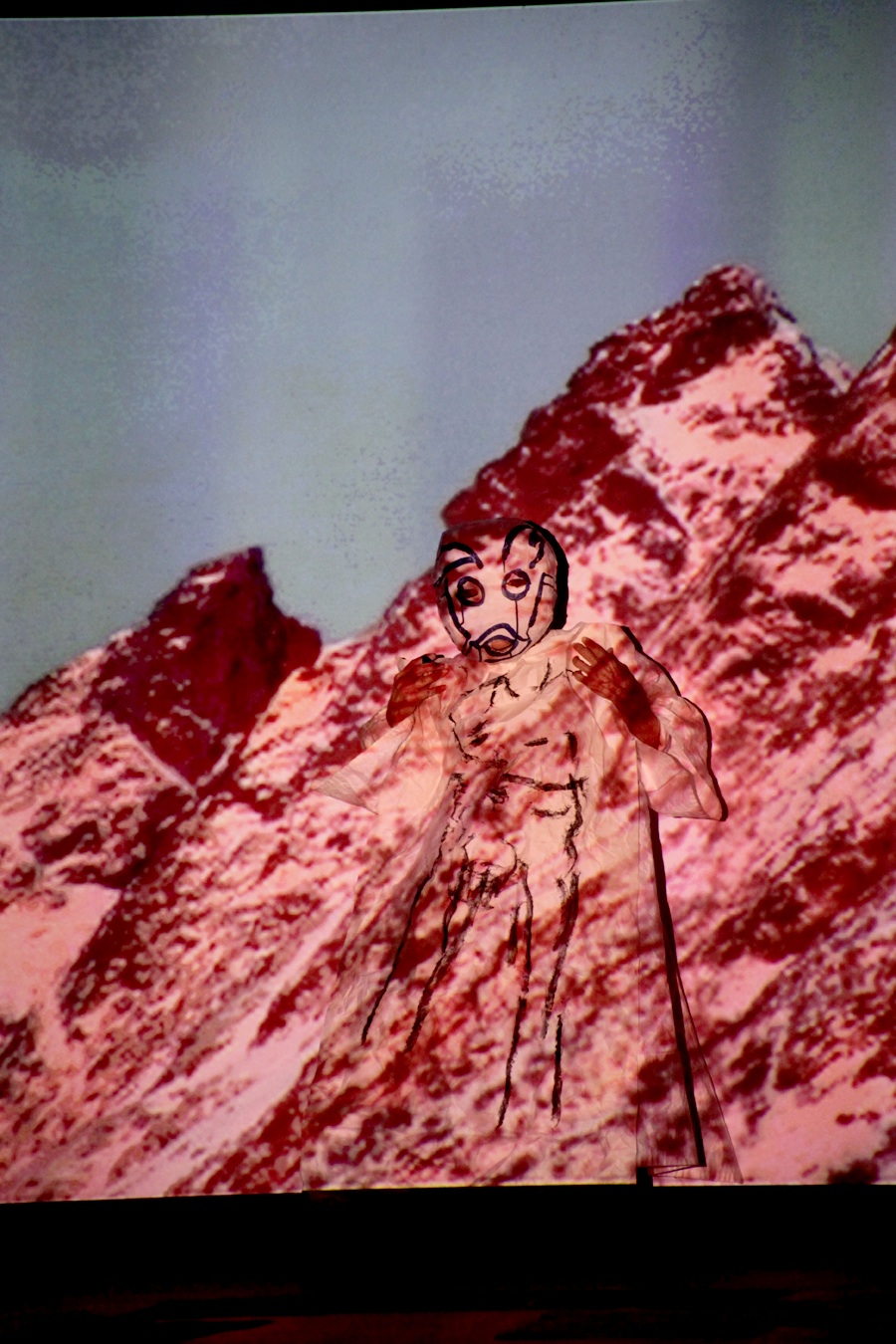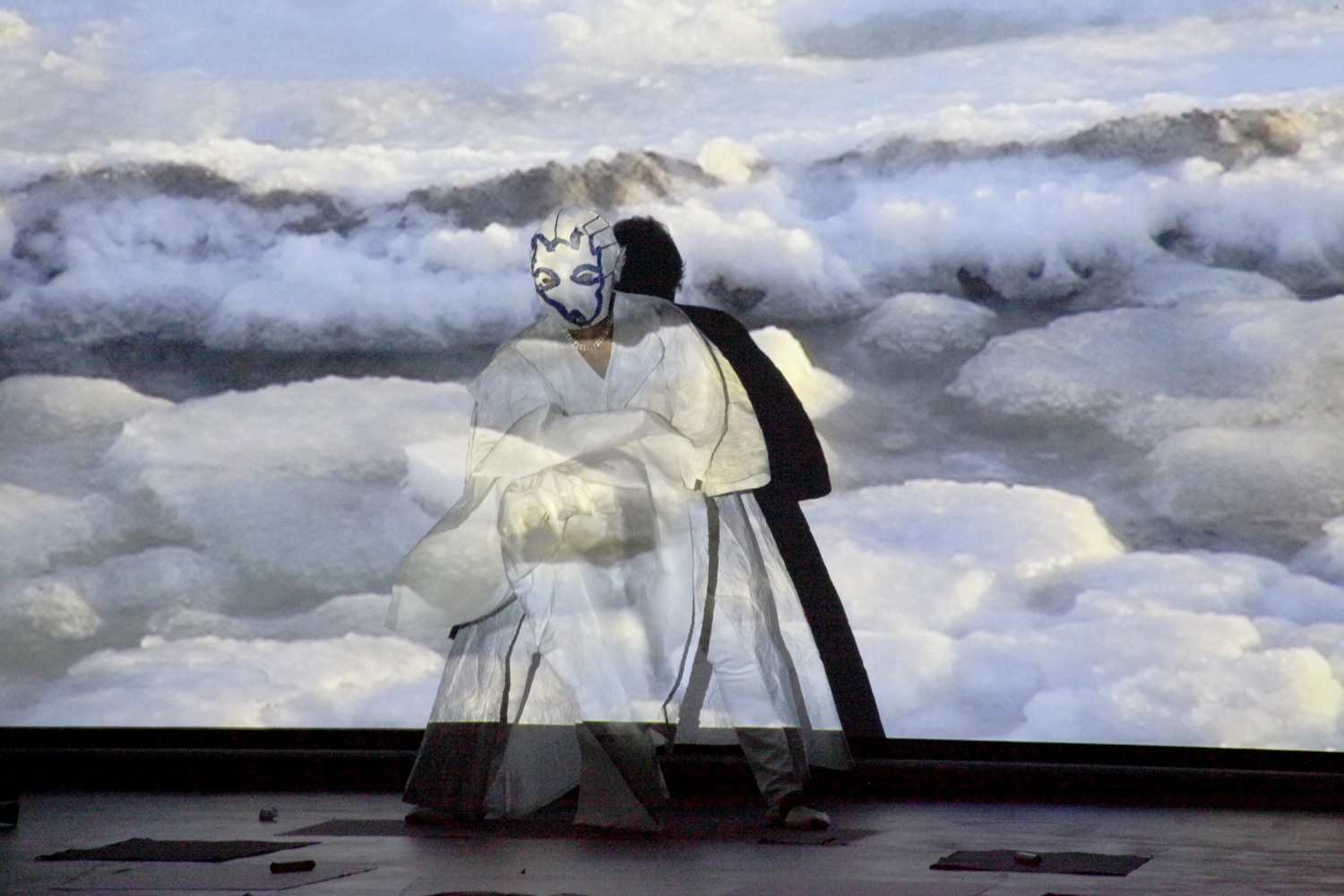"I found myself continually investigating my own image in the monitor. I bought a mask of a doll’s face. It transformed me into an erotic seductress," wrote Joan Jonas in 1982 of her seminal work "Organic Honey." In the piece, Jonas channeled the alter ego of a femme fatale TV persona to explore the rituals, disguises and fantasies realized in feminine theatricality.
Jonas, one of the first artists to employ video as an artistic medium, has toyed with the relationship between video, performance, art and reality since the 1960s. Her pieces combine myth, mysticism, rhythm, ritual, repetition, an allegiance to nature and technological experimentation with an underlying sense of mystery. Experiencing a Jonas film feels like a spiraling into a dream. As Karen Rosenberg said in her New York Times review, "You never really know what she’s up to."
Jonas is performing a multimedia piece and installation entitled "Reanimation" at this year's Performa festival, a performance described as "epic, yet delicate." We reached out to Jonas to learn more.

Joan Jonas, dOCUMENTA 13, photo credit Maria Ruhling
Tell me about your upcoming piece, "Reanimation."
"Reanimation" is a project that I began in 2010. It was originally presented as a video performance. Since the early '70s, my performances have included video. The audience sees a detail of the performance in the video projection alongside myself, live, actually making the images seen simultaneously in the video. There is also prerecorded footage. This piece began as a twenty minute visual representation of a text. I made a series of images mixing photographs, objects and drawings with footage from several of my earlier video works. It was based on the the book written in the sixties, "Under the Glacier," by the Icelandic writer Halldor Laxness.
When I began working on this piece I immediately thought of the present time in which glaciers are melting. In order to complete the project I went to Norway to the Lofoten Islands to record the landscape, the snow and the ice. After the installation was finished, which consisted of four video elements, props and objects, I began to work on the performance which was also presented at Documenta. I've always worked in this way, simultaneously developing the parallel forms, performance and installation, exchanging material back and forth, re-editing and rearranging the video sequences, the sound and the movements. One difference, in this case, is the sound. Sound alters one's perception. For the installation I recorded the songs of the Norwegian Sami singer and human rights lawyer, Ande Sombe. For the performance I developed the sound with the composer Jason Moran who will play live.
What was it about the book ["Under the Glacier"] that drew you to it?
In the mid eighties when I spent time in Iceland working on a project based on an Icelandic saga I became fascinated with the novels of Laxness. In "Under the Glacier," it is in the way that he writes about the beauty, the miracles, and the spiritual in nature with wit and irony that inspires me.
Can you explain your improvisation process? How long does it take? Is there a revision process?
I begin in various ways with a form such as a cone, a space, and/or a story that I edit to make a script which serves as a structure. Then I might record video sequences, collect objects or construct props or a stage set. I have to create a place, a space into which I can step in order to enter another reality.

Joan Jonas, dOCUMENTA 13, photo credit Maria Ruhling
Have you altered the piece at all since you showed it at Documenta in 2012?
There are no changes. Once I work on a piece and we develop it, it is very difficult to change it. We try to adjust it to the situation but we don't change it.
A lot of people have described the piece as meditative or poetic, and yet you're working with some political messages. In your eyes are these two fields, politics and poetry, intertwined? That seems like an unusual viewpoint.
I refer to the present situation metaphorically. The political is in the personal or the poetic representation of Laxness' text. I work with visual imagery in relation to the edited fragments from "Under the Glacier." For instance, Laxness describes the miraculous act of the honey bee as it pollinates a dandelion. One has to be aware of the plight of bees. There is reference to the fragility of the world and global warming but it is just implied, not overtly stated.
Performa has become a massive, worldwide art event. How does it feel to see performance art as a mainstream art? Do you think anything was lost in the rise in popularity of video art?
I think it's great, that this form called performance art has been embraced by museums, for example. It's the language of YouTube and Facebook, and a form of communication for younger artists and older ones as well. I think that it's very important to have a wider audience. Of course times have changed and the work has changed. The initial experience of the 60s and 70s, when we first saw ourselves in our video monitors, is gone forever, but the memory exists in the recordings. Something lost, something gained.

Joan Jonas, dOCUMENTA 13, photo credit Maria Ruhling
You work with video but you've also mentioned how technology is invading the sacredness of space. How do you balance using technology with protecting yourself from it?
Technology is part of our lives, but it has negative uses in war and it pollutes. I have worked with the technology of video from the late 60s. My work is very simple in a technological way, involving the relationship of the video projection to a live camera in a closed circuit system in the live performance. Certainly other artists do more technically complicated things than I do, but this is interesting. Video has provided a way for me to represent layers of thought, to place one perception against another.
I love film and I was deeply influenced by filmmaking. There is no getting away from it and it has produced many magical and wonderful things -- our relationship to technology. So I don't think of technology as a problem in itself, it's the way it is used. It's more that I think nature is being used in the wrong way by people. Forests being cut down, habitats being destroyed, species disappearing.
I love how you compare art and cooking. Can you expand upon that?
I was obsessed with cooking for a long period. The process for me is similar -- collect the ingredients, prepare them, mix, combine, and cook. A chemical reaction takes place and the material is transformed.
You've talked about the intimacy and interconnectedness of the New York art scene when you arrived in the 1960s. Does this exist today, either in New York or elsewhere?
The art world has grown a great deal. It used to be a relatively small group. A lot of things have changed, people's relationships are simply different. Friendships, alliances, the exchange of ideas. There exists small groups in every country, every city, of people who do support each other. And I think many things will grow out of those networks. Artists have to work together now because there's so many of us, and there's less space, but with the overlapping of disciplines and the collaborative it is an exciting time
What is your collaboration process like?
In order to produce a performance I have to work with other people. I direct it and I compose it, but while I shoot all my video projects I also need a video technician to transfer and to help in the editing process, in this case David Dempewolf. I've been working with the composer Jason Moran since 2005, he is a jazz composer and musician. We work in a parallel way. I develop a piece and he looks at my video and the space and the situation and the subject and begins to make music. I respond to his music with sounds and movement and we work back and forth like that.

Joan Jonas, dOCUMENTA 13, photo credit Maria Ruhling
Women have led the way in the histories of both video and performance art. Do you think this has anything to do with the fact that women are still seen in this media? They are still, in a way, occupying the frame?
I think it started that way because when these portable cameras first came on the market in the 1960s and artists used them in their studios it was an unexplored territory. It wasn't like painting and sculpture that was, at that time, somewhat dominated by men. So women felt free in relation to performance and the medium of video. It was at the time of the feminist movement affecting both men and women who could use this medium to express themselves in a poetic way. They could send out the message. Now women are much more accepted and represented.
You've said your entire career feels connected by threads. Is there something in particular that you feel has dramatically changed over the course of your artistic career?
There have been a sequence of periods in which I have experimented with various ways of translating ideas and concepts into form. Today's work is far more complex and layered than the early work.
What works at Performa are you most excited for?
Voice is the Original Instruments with Joan La Barbara, Meredith Monk, Maja Ratkje and Squat Theater, Jerome Bel, Benjamin Patterson, Jill Magid, Pedro Reyes.
What advice do you have for emerging artists?
Love what you do. Work work work. Enjoy. Remember time passes.
PERFORMA 13: Joan Jonas' "Reanimation" will take place on Fri. Nov 15, 8:00 pm, Sat. Nov 16, 3:00 pm, Sat. Nov 16, 8:00 pm at Roulette, 509 Atlantic Ave, Brooklyn.